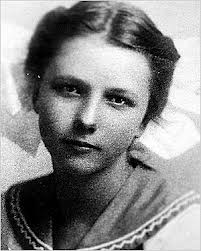An unquenchable love
/First class Titanic passengers Isidor and Ida Strauss were traveling home to New York, where Isidor co-owned Macy’s Department Store with his brother Nathan. Normally preferring to cross the Atlantic aboard European ocean liners, they had sailed to Europe aboard the German-built Amerika, and spent the winter in southern France. They were rarely apart during their 41 years of marriage, and wrote letters to each other daily during their few separations. The Strauss’s traveled with a maid, Ellen Bird, and a manservant, John Farthing. When the Titanic’s crew ordered women and children to the lifeboats, Isidor escorted Ida to Lifeboat 8. She is reported to have said, however, “We’ve been together many years. Where you go, I go.” Other passengers tried to persuade her to board the lifeboat, but she refused. She gave her fur coat to Ellen Bird, saying she wouldn’t be needing it. The Strauss’s were last seen sitting in deck chairs, holding hands.
The Strauss’s eldest son, Jesse, was sailing to Europe at the same time aboard the Amerika. The ship had sent warnings to the Titanic regarding ice in the area. Jesse sent a telegram to his parents and told them about the ice he had seen.
Isidor Strauss’s body was recovered and taken to a mausoleum in New York. Ida’s body was never found. A quote from the bible memorializes the couple at the mausoleum: “Many waters cannot quench love. Neither can the floods drown it.” Song of Songs 8:7.
In the movie, Titanic, the Strauss’s are depicted holding each other in bed as water seeps in under the cabin door. A scene showing Ida refusing to board the lifeboat without her husband was deleted.























